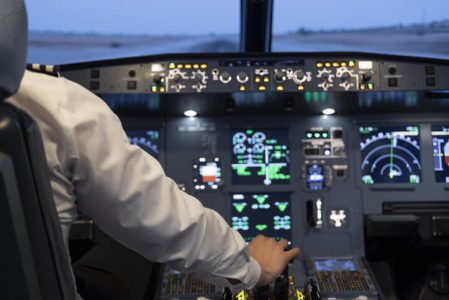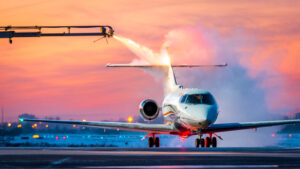Definition and Background of Single-Pilot Resource Management
Single-Pilot Resource Management (SRM) is the management of all onboard and outside resources available to a pilot before and during a flight to help ensure a safe and successful outcome. SRM evolved from the practice of Crew Resource Management (CRM), which began after the 1978 crash of a United Airlines flight that ran out of fuel while the crew was troubleshooting a landing gear problem. Because all 3 crew members were focused on solving the gear issue (which turned out to be a faulty indicator light), nobody was flying the plane, which crashed into the Florida Everglades.
The idea behind the original CRM was to focus on communication between pilots and develop a less authoritarian culture where co-pilots are encouraged to question the captain if they observed errors and mistakes. SRM is a continuation of that concept, but since the pilot is flying alone, it encourages the pilot to reach out to all other available resources before and during a flight, including technology.
Concepts Included in SRM
SRM training helps the sole pilot maintain situational awareness in all phases of flight. Learning how to manage automation, aircraft control and navigation tasks are critical to maintaining the highest level of safety. SRM uses many concepts to enhance the safety of pilots flying alone, including:
- ADM (Aeronautical Decision Making): a systematic approach used by pilots to consistently assess and manage risks, enhancing aviation safety by making informed decisions throughout the flight.
- Risk management: the process by which pilots identify, assess, and mitigate potential hazards to enhance safety and ensure successful flight operations.
- Task management: organizing and prioritizing tasks to ensure efficient and safe flight operations, enabling pilots to effectively handle multiple responsibilities during a flight.
- Automation management: the process by which pilots effectively oversee and utilize automated systems to enhance flight safety and operational efficiency.
- Controlled Flight Into Terrain (CFIT) Awareness: the pilot’s ability to recognize and prevent scenarios where an airworthy aircraft inadvertently flies into the ground, water, or obstacles, thus ensuring flight safety.
- Situational Awareness: the continuous perception and understanding of the surrounding environment allowing pilots to make informed decisions and maintain safe and effective flight operations.
The 5Ps of SRM
To get the most out of SRM, it will help to take a structured approach to each flight. The FAA suggests a 5P framework that includes Plan, Plane, Pilot, Passengers, and Programming.
Plan
The plan includes the basic elements of cross-country planning and can change at a moment’s notice, so the pilot must always review and update the plan. Consider:
- Weather
- Route
- Fuel
- Current publications
Plane
Throughout the flight, the pilot should monitor the aircraft and its systems to detect any abnormal indications as soon as possible. Consider:
- Airframe
- Systems
- Equipment
- Avionics
- Limitations
Pilot
Passing the traditional FAA checklist of “IMSAFE” is a critical part of the 5P process and includes the following potential hazards:
- Illness
- Medication
- Stress
- Alcohol
- Fatigue
- Emotion
Passengers
From holding a checklist in an emergency to distracting you with their anxiety mid-flight, pilots should always consider and account for the effects of having passengers on board, especially:
- Physiology
- Discomfort (including anxiety)
- Desire to reach their destination
Programming
The pilot must thoroughly understand their equipment and know when each should be programmed as well as when it should NOT be attempted because of the risk of distraction. Instruments include:
- Both hand-held and panel mounted equipment
- Displays
- Moving map navigation
- Autopilot
Whether you use the 5P approach to single pilot resource management or some other method that you choose, it is important to utilize every resource that is available to you, both before and after each flight. The safety of your flight depends on it.
RELATED CTS TRAINING









